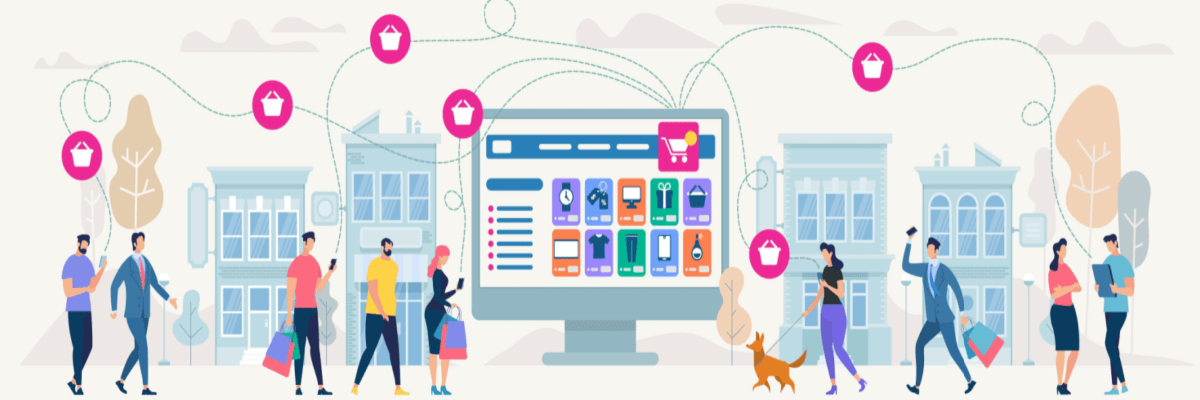

Making your first sale is a major milestone in launching your ecommerce business. While it might feel daunting at first, it's all part of the exciting journey of building your brand. With countless ways to promote your store and reach potential customers, there's a world of opportunity waiting for you.
As a new online store owner, it’s easy to get bogged down in perfecting the look of your website—focusing on colors, fonts, and layouts. However, the most important step is getting your store live, promoting your brand, and driving traffic to make your first sale. In this guide, we’ll cover how to attract the right kind of visitors and convert them into paying customers.
In the early stages, it’s crucial to focus on driving free traffic to your store. This doesn’t mean spending hours on design, but rather tapping into free channels like personal networks, search engines, and community engagement.
Here’s how to get started:
Share Your Store with Personal Networks: Let your friends, family, and colleagues know about your new business. Announce your launch on your social media profiles, and include a link to your store in all of your bios.
Offer Incentives: Consider providing a discount code for first-time visitors to encourage them to shop with you.
Create SEO-Optimized Content: Create blog posts or product guides that align with common Google search queries. This can help improve your visibility and attract organic traffic from search engines.

Don’t underestimate the power of your personal network and social media to spread the word. Many entrepreneurs find that their first sales come from people they know. Reach out to friends and followers to give your business a boost.
Direct Social Sharing: Post about your store on your personal accounts, share it in niche Facebook groups, or participate in forums like Reddit where your target audience hangs out. Engage with users who are interested in your product.
Email Outreach: Send a direct email to your close contacts, asking them to check out your store and spread the word.
Tip: Join communities of other entrepreneurs, such as the r/Entrepreneur subreddit or Shopify’s community forum, to learn from others and get feedback.
Discounts are a great way to attract new visitors and encourage purchases.
Create Discount Codes: Offering a limited-time discount for first-time customers can help turn casual browsers into buyers.
Bundle Deals or Flash Sales: Offering product bundles or flash sales creates a sense of urgency and can increase engagement with your store.
Giveaways: Hold a giveaway to build excitement and increase visibility.
Example: Scarlett, a jewelry brand, used LinkedIn to offer $25 gift cards to customers in exchange for an email sign-up and survey completion. This helped them collect leads and build an email list.

When customers look for products, they usually start with a Google search. To stand out, your store needs to appear in relevant search results. This is where Search Engine Optimization (SEO) comes in.
Keyword Research: Identify search terms your potential customers are using to find products similar to yours. Use these keywords in your product descriptions, blog posts, and other website content.
Create Helpful Content: If you sell kitchen gadgets, for example, create blog posts with cooking tips or recipe ideas. This will not only help you rank in search engines but also provide value to your visitors.
If SEO feels overwhelming, you can hire an expert or work with a Shopify partner to get the right strategy in place.

While organic traffic is great, paid ads can give your store an immediate visibility boost by putting your products in front of a larger audience. Here are some effective options:
Facebook Ads: Facebook remains one of the largest social networks, offering detailed targeting options. Use Facebook Ads to reach users who are likely to be interested in your products.
Instagram Ads: Instagram’s visual format is perfect for showcasing products. Use Instagram ads to create brand awareness and showcase your products through photos, videos, or carousel ads.
Google Shopping Ads: Use Google Shopping Ads to show your products directly in search results, helping customers find you when they're actively looking for similar items.
When running ads, make sure your social media profiles are updated with engaging content, and your website is ready to convert visitors into customers.
To increase the reach of your marketing efforts, consider forming partnerships with influencers, bloggers, or other brands. Collaborations can help you get in front of an audience that trusts and follows the person or brand you’re partnering with.
Collaborate with Bloggers: Pitch a guest post or sponsored content opportunity to bloggers who cover topics related to your niche.
Work with Influencers: Reach out to influencers who align with your brand and offer them your product for review or a collaboration. Micro-influencers often have highly engaged audiences and are more affordable than major celebrities.
Example: A collaboration with a popular influencer or blogger can introduce your brand to thousands of potential customers who may trust their recommendations.
As you launch campaigns and drive traffic to your store, it’s crucial to monitor your performance. Analyzing your website traffic, conversion rates, and sales will give you insight into what’s working—and what’s not.
Use Analytics: Most ecommerce platforms, including Shopify, offer built-in analytics tools. Use them to track where your traffic is coming from, which ads are performing well, and where customers are dropping off.
A/B Test: Test different messaging, product images, or offers to see which ones resonate most with your audience.
As you start driving traffic to your store, you may encounter a few challenges, such as high bounce rates, visitors browsing without buying, or abandoned carts. Here are some ways to address these issues:
Reduce Bounce Rates: If visitors are leaving quickly, ensure your landing pages are engaging, your website loads quickly, and your content is aligned with their search intent.
Encourage Purchases: If visitors are browsing but not buying, consider revising your product descriptions, adjusting prices, or ensuring your checkout process is smooth and simple.
Address Abandoned Carts: If many customers are abandoning their carts, streamline your checkout process, offer multiple payment options, and provide transparent shipping policies.
Making your first sale is an important milestone, but it’s just the beginning. As you continue to promote your store, engage with customers, and optimize your strategies, you’ll lay the foundation for building a brand that people trust and love.
Build Trust: Display customer reviews, offer clear return policies, and ensure your website looks professional. These elements help build confidence and encourage customers to complete their purchases.
Keep Engaging: Continue refining your marketing tactics, interacting with customers on social media, and consistently providing great products.

Keep Going!
Your first sale is just the start of a journey toward building a successful ecommerce business. With the right strategies in place, you can drive traffic, convert visitors into loyal customers, and continue to grow your brand. Keep refining your marketing, learning from your data, and, most importantly, keep engaging with your audience. Every great business started with just one sale—yours is the first step!




Customer's favorable comments is our eternal motivation. We feel grateful for all the support and company.

Lorem ipsum dolor sit amet, consetetur sadipscing elitr, sed diam nonumy eirmod tempor invidunt ut labore et dolore magna aliquyam erat, sed diam voluptua.

.webp)
.webp)
.webp)
.webp)